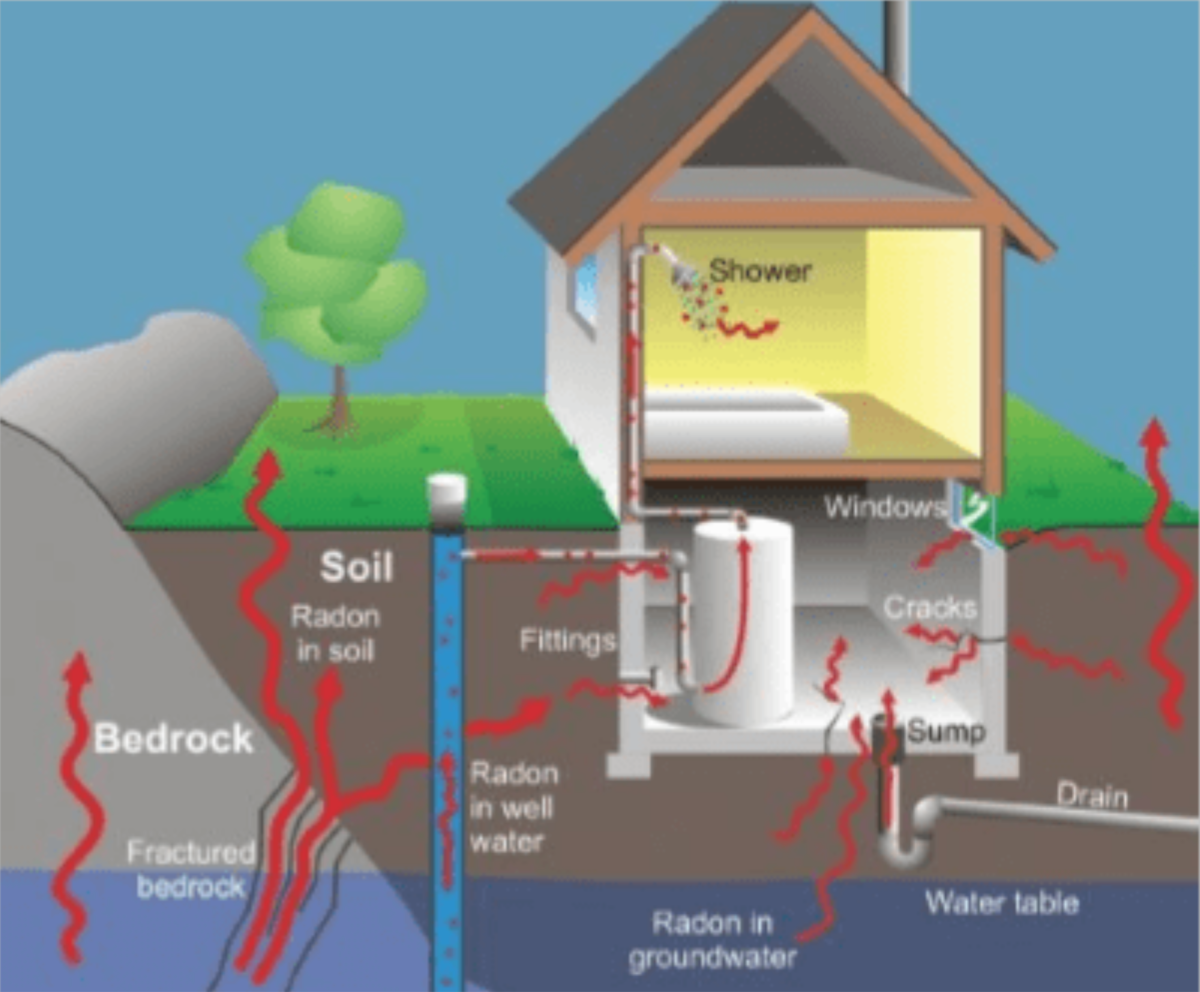US EPA
Is radon really bad for you?
Breathing radon over time increases your risk of lung cancer. Radon is the second leading cause of lung cancer in the United States. Nationally, the EPA estimates that about 21,000 people die each year from radon-related lung cancer. Only smoking causes more lung cancer deaths.

Therefore, every residence needs to take advantage of radon screening, which is easy, inexpensive, and also lifesaving, the company states. Some granite kitchen counters may reveal individuals to various levels of radon.
The systems can likewise keep out other soil gases like, methane, trichloroethylene, chlorine, negative odors and also water vapors. Having a home with a radon reduction system in place and also maintaining the degrees reduced will help in reducing lung cancer risk. There is concern distributing about the threat of lung cancer because of breathed in radon gas, as a result of the prevalent promotion offered to studies that connect lung cancer occurrence to radon concentration utilizing a "linear no-threshold" (LNT) design. This design which several scientists claim is unjustified and need to be ditched forecasts an alarming extra of cancers cells, also at low radon degrees.
Is radon mitigation really necessary?
When radon gas enters the body, it exposes the lungs to small amounts of radiation. In small quantities, experts say this is harmless. However, in persistent exposures or larger quantities, radon can damage the cells of the lining of the lungs, increasing a person's chance of developing lung cancer.
This does not suggest that a degree listed below 4.0 pCi/L is thought about appropriate, as mentioned in the BEIR VI study. https://www.openlearning.com/u/fredda-qaua81/blog/DiscoverRadonTesting/ It is approximated that a reduction of radon levels to listed below 2 pCi/L nationwide would likely lower the annual lung cancer fatalities attributed to radon by 50%. Nonetheless, despite having an activity level of 2.0 pCi/L, the cancer danger presented by radon gas is still thousands of times greater than the threats permitted health hazards in our food as well as water.
- Radon gas is a naturally-occurring result of the radioactive degeneration of Uranium in the soil.
- Depending upon your geographic place, the radon degrees of the air you take a breath beyond your residence might be as high as 0.75 pCi/L.
- The national standard of outside radon degrees is 0.4 pCi/L and also it is approximated by the National Academy of Sciences that outdoor radon degrees cause approximately 800 of the 21,000 radon generated lung cancer cells fatalities in the US annually.
- The US EPA has actually put it clearly, specifying, "Any radon exposure has some risk of creating lung cancer cells.
In the United States, approximately 14 states have a state radon programs which train and also certificate radon reduction contractors and radon dimension specialists. If your state licenses radon experts contact your state wellness department, to determine. Without the proper tools or technical expertise, radon levels can actually enhance or create various other added prices and potential risks. A listing of qualified mitigation service providers is offered with state radon offices, which are detailed on the EPA site at/ radon/whereyoulive. html.
Wellness
Nevertheless, you choose what you consume, whether you smoke, as well as just how and also when you drive. A easy and also affordable radon examination can provide you the details you need to make an informed decision about what level of radon gas exposure is acceptable to you. While any quantity of exposure to radon gas comprises a wellness threat, your threats of having lung cancer decrease significantly as radon degrees decrease.
How long does it take for radon to cause cancer?
Fact: You will reduce your risk of lung cancer when you reduce radon levels, even if you've lived with an elevated radon level for a long time. Keep in mind that radon levels below 4 pCi/L still pose some risk and that radon levels can be reduced to 2 pCi/L or below in most homes.